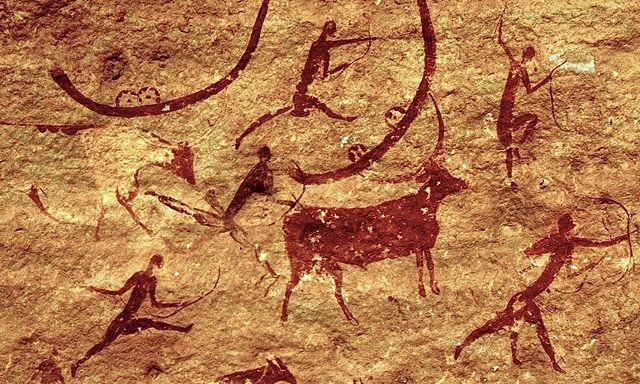

In Baja California, there are several places where these pictographs can be seen. From El Vallecito in Mexicali, passing through San Quintín to the south and visiting the Sierra de San Francisco.
“They were made by the first settlers as a testimony of their life. It is the oldest manifestation of art”, explains José Luis, one of the guides of this route in Baja California. We arrive at El Vallecito, it is ten o’clock in the morning and the summer is hot in this region of the country.
Here, in El Vallecito, you can see different groups of cave paintings which, according to records, began to be painted more than 4,000 years ago. They range from geometric figures to figurative elements where stars, animals and human forms can be distinguished."
The painting you should see is El Diablito, as we call this group of pictures whose central element is the figure of a person with horns,” says José Luis. According to legend, every December 21, during the winter solstice and at sunrise, light invades the cave, illuminating each pictorial motif until it reaches the very center of El Diablito.
After the revelation, we headed to the next point of the tour: San Quintín, a destination also known for its natural beauty and biodiversity, and one of the places with the largest number of rock art sites in Mexico.
The authorship of these drawings is attributed to the Yumana tribe, who made them during the winter, when they stayed inside their houses or caves to protect themselves from the weather. Data from the Local Museum of San Ignacio, in Baja California, dedicated to rock art, attests to this.
Upon arriving at San Quintín, we visited the Mesa del Carmen archaeological site. This site is remarkable for its well-preserved murals, with reddish and black pigmentations, depicting animals such as deer, coyotes and fish.
In San Quintín we will have lunch before travelling by road to the last point of the route. It is best to drive the first three hours and sleep in Guerrero Negro, and then the next day we will drive another three hours to the Sierra de San Francisco, a UNESCO World Heritage Site.
Before we get there, our guide warns us that there are many other places in Baja to appreciate this legendary treasure: “There is the area of Las Pintas, where there is a group of enormous rocks with hundreds of white drawings.
Back in San Francisco, we took a trip uphill on a mule to reach the sierra, where the paintings are located. We are in the Central Desert. The road is already a scenic spectacle from which these ancient settlers must have drawn inspiration.
Between plains and plateaus, we come across the mysterious paintings, we all wonder how they managed to draw them with such perfection, and an overwhelming silence fills us, while José Luis gives us his explanation: “This place is a unique reflection of the artistic work of these tribes. Many of them performed special rituals before painting, in fact, it is very likely that these works were done under the supervision of their shaman”
And receive exclusive information to travel through Mexico in style!